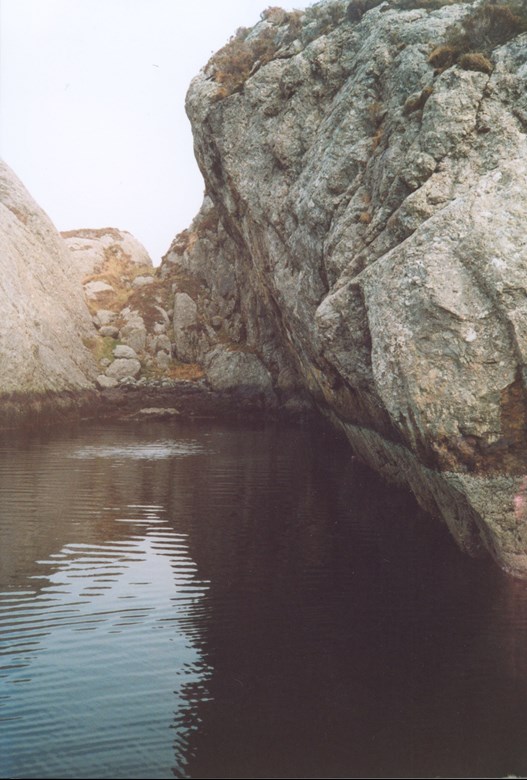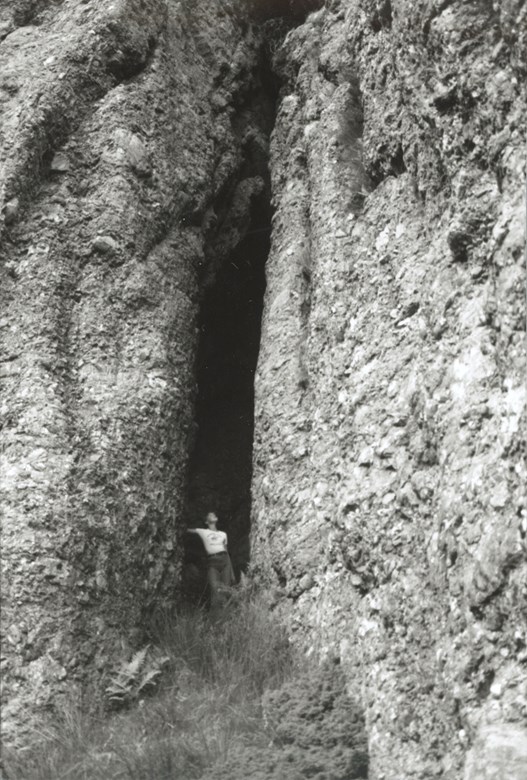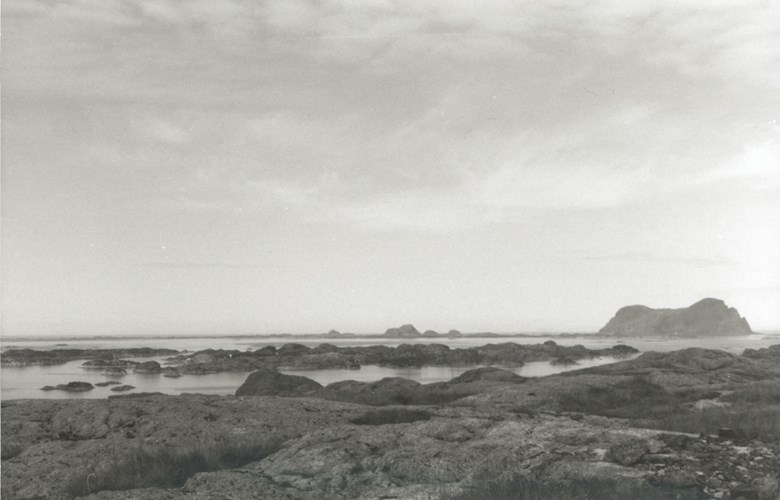Arms depot in the middle of the idyll
Ospa is a conglomerate of various idyllic bays, islets, small and larger islands, and in the middle a spacious, interesting lagoon, which can be entered through a couple of narrow straits, from the west and the south. On a summer's day it is a favourite place of rest for holiday-makers in boats, who enjoy unspoiled nature and want some time for themselves.
On a small islet well hidden under heather and turf, there was in 1944 an arms depot that the Germans never detected. The vessel which had the mission to take the equipment south to the Austfjorden, had to make two trips to find it. The Germans may have had a hunch, but the name could easily be confused with Oldra, where they were able to capture an arms depot.
High speed, but small fuel tanks
The MTB 345 was a small 55-footer, designed for narrow waters. She could make 40-50 knots, but had a rather short range. Two MTBs usually operated together on missions. The 345 had to have another MTB with it to transport jerry cans with petrol for the return trip. Petrol storages were hidden at Oldra and at Ospa. At Ospa some petrol was spilled into the water and gave some smell. People from Færøy moved the watertight jerry cans into a bay and chained them under water. The 345 arrived late one evening at Ospa to tank, and anchored under a rock with a camouflage net over it. But there was no petrol.

Look under the boat!
Local people gave the tip-off to look under the boat! Unfortunately it was the wrong mix. The MTB had enough to reach British air support to the west in the ocean, but chose to stay put. That was disastrous. The next day the boat was detected by German planes, who had perhaps been warned by the signal station at Hugøy. Soldiers were landed from the east, navy vessels closed the straits, and they were surrounded. The Germans were able to prevent them from sinking the boat. The exchange of fire was short, it is said, but at least one German was killed and one Norwegian wounded.
Explosives in the cases
The crew of seven, six Norwegians and one English radio operator, were taken to Ulven and handed over to the German security police. In this way they were treated as saboteurs and not as prisoners of war. On 30 July 1943, they were shot in a grove, so ordered by the security police chief, Fehlis. This barbarous war crime was committed in the deepest secrecy. The coffins were lowered into deep water in the Krossfjord with explosives so that everything would remain a secret. After the war, the security police chief Fehlis could not be brought to justice. He escaped the responsibility for all his atrocities by committing suicide on 8 May 1945. The MTB 345 was towed to Bergen.
Tent in the "church"
But the deserted Ospa hides its secrets well. It is not easy to detect the entrance to the cave of Ospekirkja (kirkja is dialect Norwegian for church) either, and even more difficult after the field of plants grew up. Yet that is where Oskar Netteland from Solund and another person had his tent when they in the spring of 1943 operated a radio transmitter there. During the previous cold winter, Oskar had been in the mountain of Krakhellefjellet and reported about air and sea-lane traffic. People talked about the two strangers at Ospa. Good people at Færøy warned them and organized escape. On the Swedish border the two of them were arrested. Oskar was imprisoned at Akershus until the end of the war, the last year with a death sentence hanging over his head. Both of them lied so convincingly that no contacts were betrayed.





